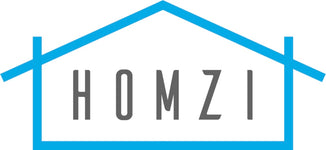Smart lighting basically works by “networking.” This is basically a mesh of wireless connections where each smart bulb is connected to the other. It’s all controlled by a “hub.” This hub connects to a router, which then interlinks the network with your smartphones and tablets! This is how a smart lighting system is installed in a space, and how it connects further to your devices.
Alternately, you can also use Wi-Fi and Bluetooth programs to control your smart lighting as well. It’s definitely a wonder of technological evolution! Here are a few extra facts in this regard:
- Smart lights with the label “ZigBee” and “Z-Wave” are the ones that can connect to a hub. They’re relatively expensive and prices start from $50 onwards.
- Wi-Fi and Bluetooth lights are cheaper. They also don’t require any extra hardware.
- Wi-Fi lights simply connect to your existing internet router.
- Bluetooth smart lights have an operational range of 30 ft. and no more. This can be a massive setback for larger homes.
Smart lighting systems allow you to control every single thing about the illumination in your homes. If you went somewhere and forgot to switch off the lights, the system’s “away from home” mode allows you to switch them off remotely.
Smart lighting systems are also linked to IFTTT services. It’s an acronym for “If This Then That” and this service helps you create customized settings for your ambient lighting. For example, a quick flash can be used to deliver a specific message. You can program the door light to turn blue if there’s rain in the forecast. Similarly, specific mood lighting instructions could be fed into this system.
While smart lights are available in the typical “white light” format, their principal charm is that you can install color changing bulbs as well. They’re an excellent way to set and enhance the mood and feeling of certain occasions. For example, warm gold lighting can facilitate your appetite during dinner time. Moody dimming can make a couples night feel more romantic. And there are definitely certain measures you can take to design and program different lighting colors for different occasions and alerts!
(Pro tip: you should definitely go for the IFTT service if you want to get creative with our color changing smart lighting adjustments.)
We’re all well-acquainted with Apple’s Siri and Amazon’s Alexa. These voice assistants (and more) are an excellent way to design a “control tower” for your smart lighting systems. They allow you to bypass the digital apps and directly control the ambiance via voice command! All you’ll need to say is, “Siri, set the scene to romantic dinner,” or “Alexa, it’s time to sleep,” and you’ll get whatever you want!
The price of smart bulbs has become quite affordable over the years. It’s basic economics: the ever-rising demand and innovation in the field has resulted in better and cheaper products over the years. So, if you’re searching for some affordable (and some not) choices, here are a few to get you started:
-
Hue by Phillips: Phillips is a huge name in the smart lighting industry. It’s especially reputable because of two reasons: it’s able to connect with all sorts of home kits and services, and is available in both multicolor and white light formats. It’s also surprisingly affordable, with each bulb slating to be $15 or less apiece.
-
Lifx Wi-Fi connected Smart Lights: Lifx’s low energy LED bulbs are the easiest ones to install. They just need to be connected to a WI-Fi and can be easily controlled by an app. They’re a bit on the expensive side, with their Day & Dusk fixture priced at almost #30 dollars apiece. But the convenience definitely makes up for the steep price!
-
GE Colored Smart Lights: If you want to customize the colored lighting in your homes, offices, or any other space, then GE’s smart lights and switches are a great choice. With an average cost of less than $30 apiece, they’re definitely a must-have for smart home aficionados. Their entire C series is a special hit!
The one thing you must absolutely know about intelligent smart lighting systems is that they have trouble integrating with old-fashioned dimmer switches – especially the manual ones. The inherent programming can end up clashing, which can cause the light to strobe uncontrollably. This is why you must invest in smart switches if you’re upgrading to smart lights. The good news is that they’re relatively affordable with $20 per switch apiece.
Even with a smart dimmer, the perception of actual light dimming varies with different bulb brands. This is because the human eye only perceives a change in lighting with a large drop in lumens, so you may have trouble noticing these changes with certain brands who take things rhythmically slow with this particular function.
Smart LED bulbs are 90% more efficient than their simple LED and incandescent counterparts. They also allow you the liberty of remote control, which makes them a life-changing addition to a home. Coupled with the layering, dimming, and color changing options, a smart lighting system can totally end up changing your entire life. It’s definitely a worthy investment!




